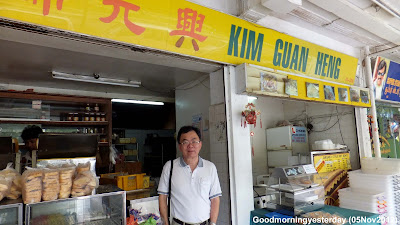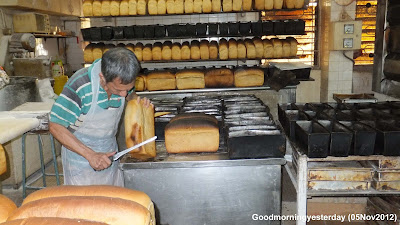From my Inbox (2012-11-02)
Hi Chun See,
Got back to Luxembourg for few days, first thing when time available - to read your book, now half way, thoroughly enjoying it! Congratulations on a project well done, so proud to be telling everyone: it was written by my primary school classmate. I do have some comments (i.e. up to page 96 now)
1) Thank you for bringing us (our generation) down the memory lane via your book, I felt the book is even better than visiting the modern Singapore because everything/everywhere familiar is disappearing so fast, no memory lanes anymore left for us. This trip I felt like a "foreigner" visiting a completely new place - i.e. not like "coming home" feeling.
2) I do envy those who lived in your village - they could enjoy and keep your vivid descriptions of the whole neighbourhood. How I wish someone could do this to our village too, so that Sock Geck and I could keep the memories in words! Congratulations also to your brother Chun Chew for his super memory to help you too.
3) You both are lucky to have an English-educated father, that means a world of difference because then he had a good job position, hence the possibility to buy cameras and to have typewriter/fridge/car at home. With the cameras, you were able to get so many photos of the past (seeing is believing). I think your family house must have been a luxury of those days to, compared with the poor attap houses around.
4) Again, you were lucky to be living in a non-Cantonese community because you picked up a lot of Hokkien and Teochew dialects on growing up. Most of the terms used by you were in Hokkien, which was commonly used in the other areas of Singapore (apart from Chinatown). In fact for a Cantonese person, I think your Hokkien is excellent :-))
5) I am amazed by the "Kan teko" (KTK), now that I am reading it. I do have some recollections of such a trade. We never had pigs (only chicken), but our neighbour (4 - 5 doors away had them), so now I do recall remarks about this person, maybe I was too young to know what he was doing. On the other hand, I remember that there was such a person who came to "sterilize" the chicken from time to time. I can recall watching him too. But anyone can help me: why sterilize the chicken?
6) The last points are my questions. I visited a place called Imperial Court at Thomson road this year, is this the old Imperial cinema?
a) At the beginning of Jalan Perminpin -Thomson Road there was a huge tree, we used to call it "Tau chiu ka" there were food stalls/coffeeshop there?
b) My last questionn: I recall between Thomson Road (5 miles) and Sembawang Hill Estate (7 miles) a place we called in Chinese, "Ang Mo Tan keh"; anything to do with the fruit rambutan trees growing there?
One of my brothers-in-law thoroughly enjoyed the book (I bought for him at Popular). He grew up in a different area, Devonshire Road, so things were quite different there. He appreciated very much what you wrote, since he was teaching at Nee Soon primary school (Yishun today) his students all came from the village area.
PS - Hopefully there will be a "future book" coming :-))
My Remarks
Thanks Aii Chan for your kind comments and for recommending “our” book to your friends.
Yes; like many other friends, Aii Chan owns part of Good Morning Yesterday, the book. She contributed details to the sections on Braddell Rise School (Chapter 7), and games that girls of our generation played (page 114). She also narrated that interesting account of her encounter with the night soil carrier at Braddell Rise School in page 53.
Related posts
Return to “Police Catch Nuns”

+-+edited.jpg)
+Vendor+near+Bedok+Rest+House+copy.jpg)
+copy.jpg)
+copy.jpg)
+copy.jpg)
+copy.jpg)


.jpg)
.jpg)










b+copy.jpg)
.jpg)
+copy.jpg)
+copy.jpg)
+copy.jpg)
.jpg)




.jpg)
.jpg)
.jpg)
.jpg)
.jpg)




.jpg)














.jpg)
.jpg)






.jpg)

.jpg)
.jpg)